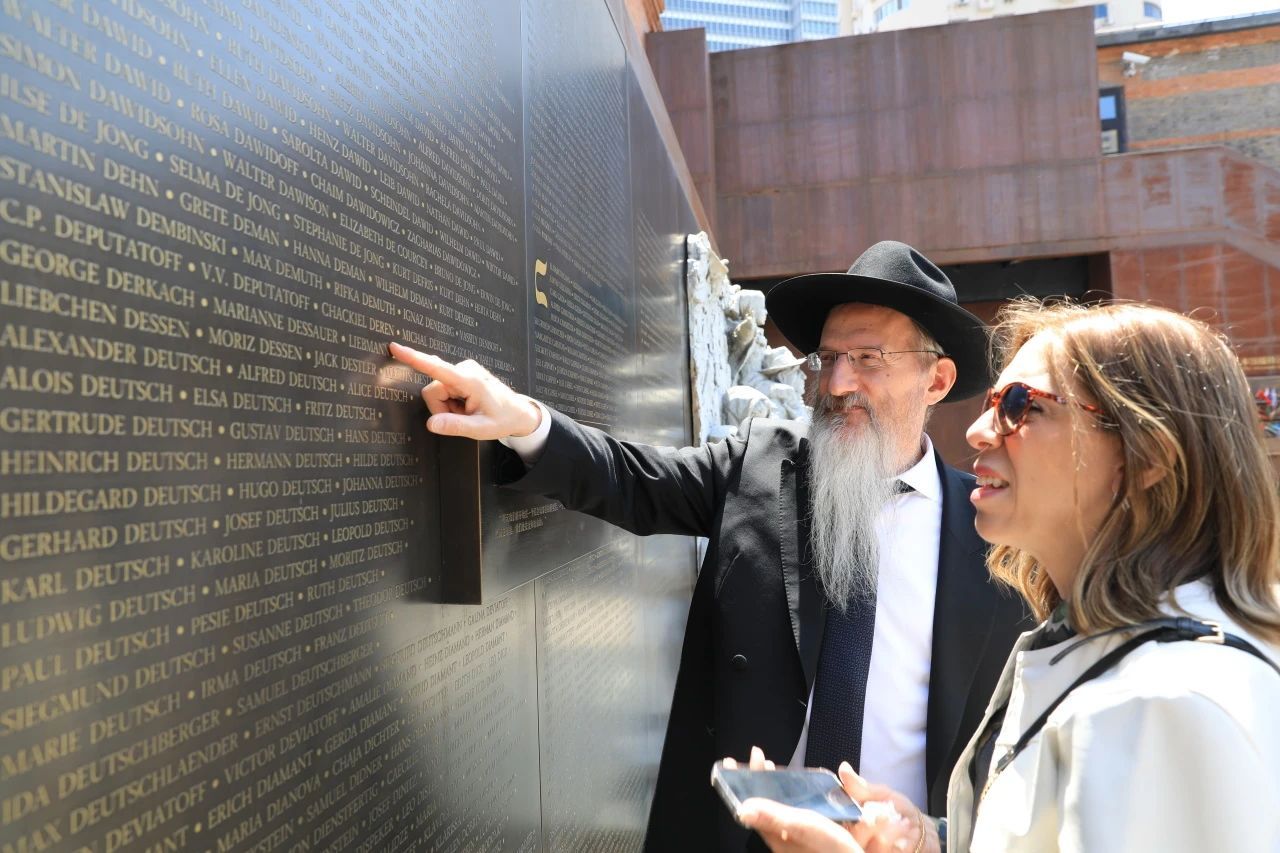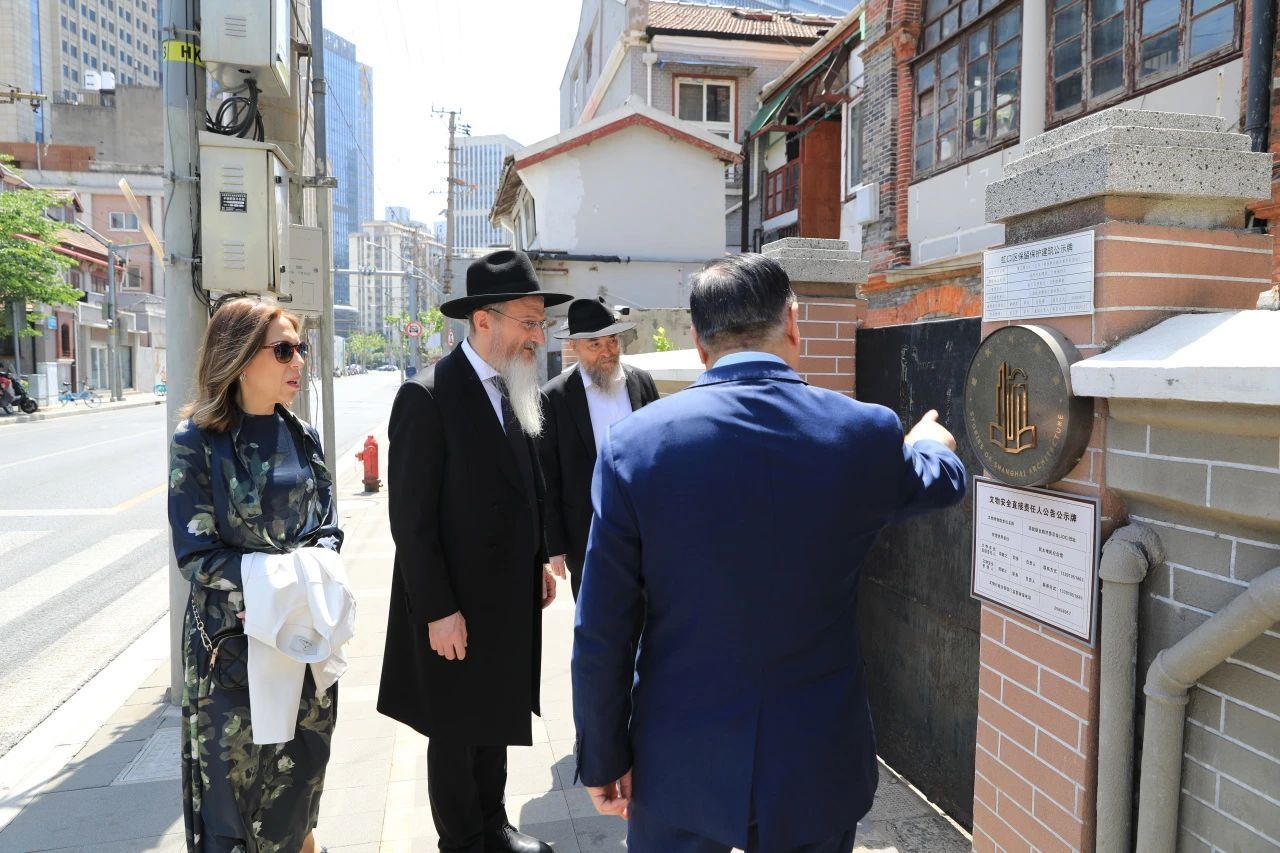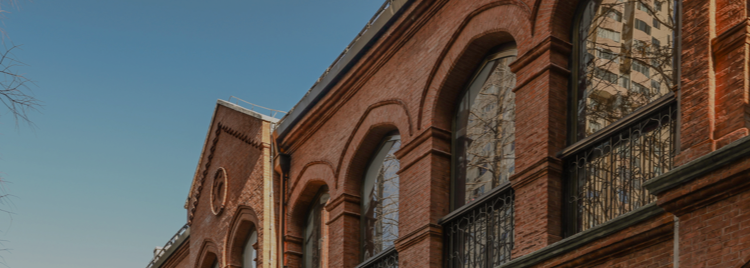During the May Day holiday, the "Jewish Youth Study Tour Group" set a new record for the highest number of visitors from a single group at the Shanghai Jewish Refugees Museum. Recently, Berel Lazar, the Chief Rabbi of Russia and one of the event organizers, along with his wife Chana Lazar, paid a special visit to the museum. They not only traced the life paths of Jewish refugees during World War II but also found Chana Lazar's father's name on the museum's Wall of Names, completing a family trace that spanned two generations.

Looking at her father CHACKIEL DEREN's name on the Wall, Chana said with emotion, "This surname links the family's suffering and rebirth. Shanghai was once his shelter, and a sacred place that we, the younger generation, remember and are grateful for."

During World War II, Chackiel Deren's parents, siblings were all persecuted. At the age of 15, he fled from Poland, traveled through many places, crossed Siberia and finally reached Shanghai where he found salvation. Later, he lived and studied in Shanghai, dedicated himself to passing on Jewish culture, and became an influential Jewish scholar.

"These buildings remind us of the refugee life described by our ancestors, difficult yet full of hope." Accompanied by Chen Jian, Director of the Museum, the couple visited the area around Zhoushan Road and Huoshan Park. They saw that the entire street still retains the red-brick, pointed-roof row houses, as if recreating the life scenes of 80 years ago. This was precisely the main settlement area for Jewish refugees during World War II.

At the end of the visit, the Lazar couple expressed their gratitude to the Museum. "Thank you for everything you do for making sure that this history will not be forgotten, and for generations to come to remember the kindness and care of the Chinese people towards other people. Thank you very much!"
During the May Day holiday, nearly 800 Jewish youth from Russia, Georgia, Azerbaijan, Estonia, Latvia and other countries visited the Museum, embarking on a journey of historical root-seeking and cultural inheritance.



![]() 021-55133186
021-55133186![]() info@shjews.com
info@shjews.com![]() 62 Changyang Road, Hongkou District
62 Changyang Road, Hongkou District

![]() 021-55133186
021-55133186![]() info@shjews.com
info@shjews.com![]() 62 Changyang Road, Hongkou District
62 Changyang Road, Hongkou District